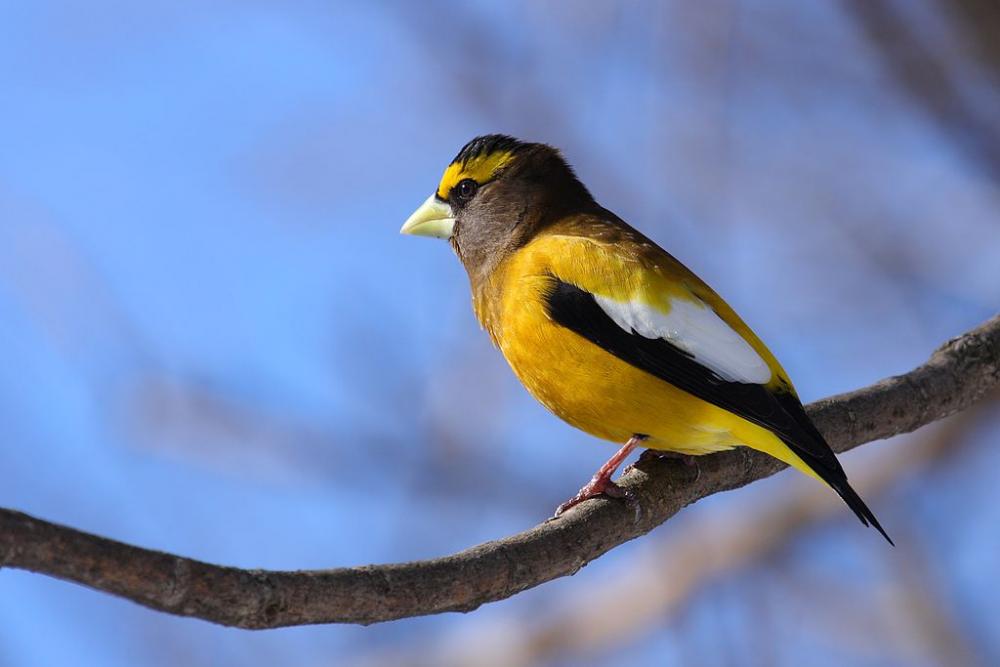Guide to Boreal Birds
Overview
This grosbeak formerly bred no farther east than Minnesota, but more food available at bird feeders may have enabled more birds to survive the winter, and the species now breeds east to the Atlantic. Like most of the northern finches, however, these birds are more numerous in some years than in others. In winter they feed in flocks mainly on the seeds of box elder or on sunflower seeds at feeders. In spring the outer coating of the bill peels off, exposing the blue-green color beneath.
Description
7 1/2-8 1/2" (19-22 cm). Starling-sized, stocky finch with a very large, pale greenish or yellowish conical bill. Male has brown head shading to yellow on lower back, rump, and underparts; bright yellow forehead and eyebrow; bold white wing patches. Female similar but grayer.
Voice
Song a series of short, musical whistles. Call note similar to the chirp of the House Sparrow but louder and more ringing.
Nesting
3 or 4 pale blue-green eggs, lightly speckled with dark brown, gray, and olive, in a shallow, loose cup of twigs lined with rootlets and placed in a conifer.
Habitat
Nests in coniferous forests; visits deciduous woodlands and suburban areas in winter.
Range/Migration
Breeds from British Columbia east to Nova Scotia and south to northern New England, Minnesota, Mexico (in mountains), and California. Winters south to southern California, Texas, and South Carolina.



